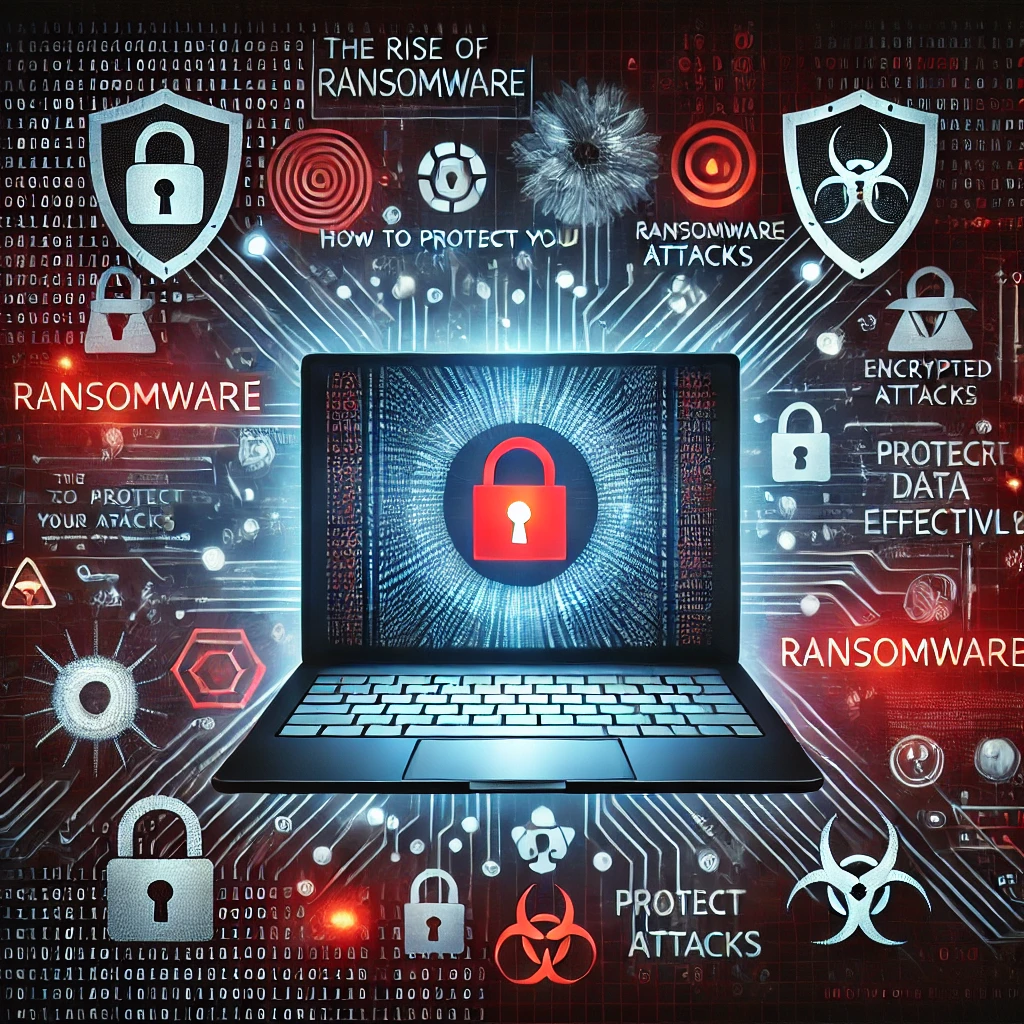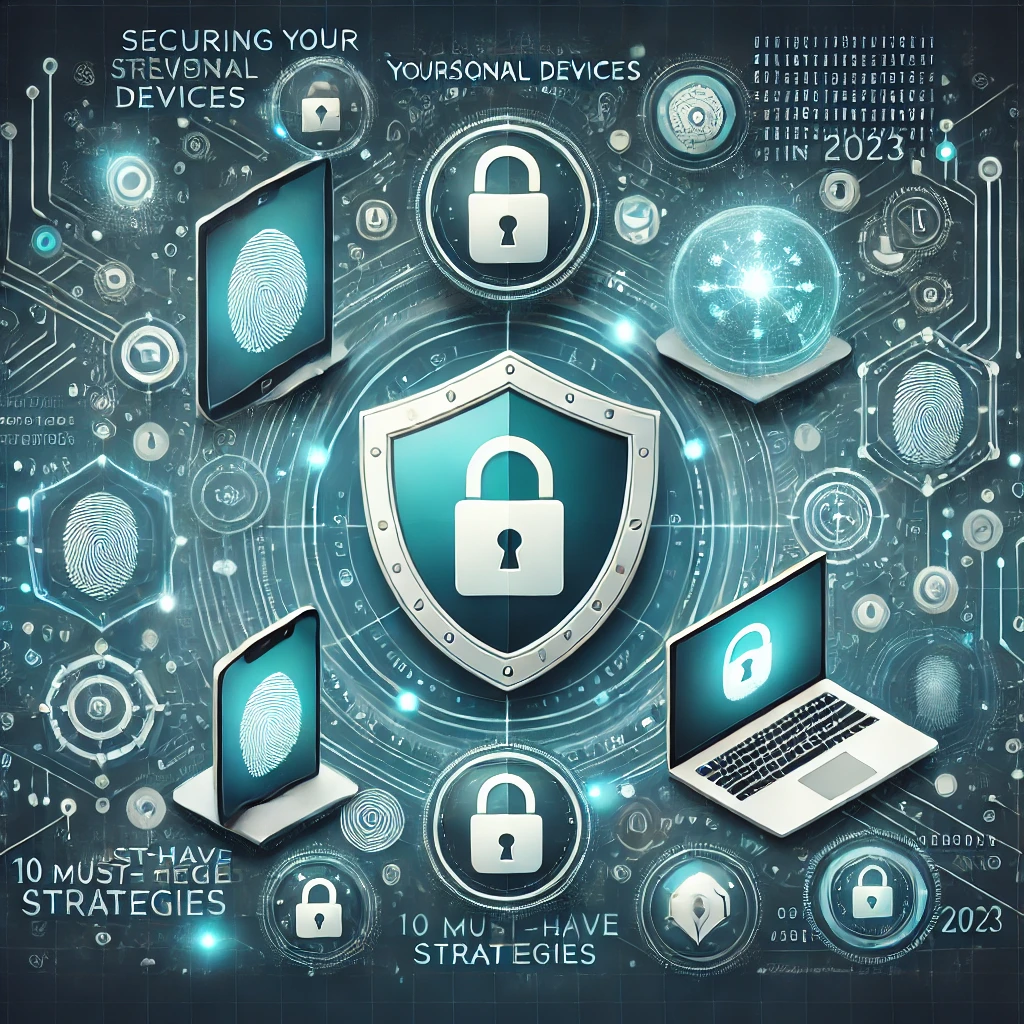Introduction
In the ever-evolving world of cybersecurity, few threats have made as many headlines as ransomware. By encrypting files and demanding payment to restore access, cybercriminals have turned this malicious method into a lucrative and disruptive weapon. Businesses of all sizes—from small startups to global enterprises—find themselves in the crosshairs. At the same time, individuals can also face the nightmare of losing cherished photos, important documents, or financial records to ransomware perpetrators.
But how exactly does ransomware work? Why is it so widespread, and more importantly, how can you safeguard your data? In this comprehensive guide, we’ll explore the anatomy of ransomware, discover real-world tactics used by attackers, and dive into proven strategies to prevent, contain, and recover from such assaults.
Table of Contents
- What Is Ransomware? A Quick Overview
- Why Ransomware Attacks Are on the Rise
- Common Ransomware Delivery Vectors
- Early Warning Signs of a Ransomware Infection
- 10 Best Practices to Protect Against Ransomware
- How to Respond If You’re Infected
- Should You Pay the Ransom? The Ethical and Practical Debate
- Ransomware Trends & Future Outlook
- Frequently Asked Questions (FAQs)
- Conclusion
1. What Is Ransomware? A Quick Overview
Ransomware is a form of malicious software (malware) designed to encrypt a victim’s files. Once the data is locked down, attackers demand payment—often in cryptocurrencies like Bitcoin—to unlock or restore access. Some variants also threaten to leak sensitive information online if the ransom isn’t paid, adding an extra layer of pressure on victims.
Key Characteristics
- Encryption of Files: Whether it’s photos, documents, or entire databases, ransomware scrambles them using cryptographic algorithms.
- Payment Demand: Victims typically see a ransom note explaining how to pay.
- Limited Recovery Options: Without backups or decryption tools, restoring data can be extremely challenging.
Over the last decade, the ransomware model has evolved, becoming more sophisticated and widespread. From personal computer hijacks to highly publicized attacks on critical infrastructure, ransomware has cemented itself as a primary tactic in the cybercriminal arsenal.
2. Why Ransomware Attacks Are on the Rise
Ransomware continues to flourish because of how profitable it is. In a few short years, it has transitioned from an under-the-radar hacker strategy to a massive, often organized cybercrime industry. Here’s why:
- Ease of Entry: The prevalence of Ransomware-as-a-Service (RaaS) allows less tech-savvy criminals to deploy high-quality malware by renting it from developers on the dark web.
- Lucrative Payouts: Targeted businesses often pay large sums quickly to minimize downtime. Individuals, though generally paying less, also represent an easy opportunity for attackers.
- Cryptocurrency Anonymity: Attackers demand Bitcoin, Monero, or similar digital currencies, making it harder for law enforcement to trace transactions.
- Global Targets: As more people work from home and rely on digital services, the attack surface expands dramatically.
- Low Risk, High Reward: Many jurisdictions haven’t fully adapted laws to combat cyber extortion, giving criminals a sense of protection.
Because of these factors, ransomware is increasingly viewed not just as a piece of malicious code, but as a business model for attackers.
3. Common Ransomware Delivery Vectors
While the core of ransomware remains consistent—encrypt files, demand payment—the delivery methods are varied. Knowing how attackers gain entry is a critical part of an effective defense.
- Phishing Emails
- Attackers embed malicious links or infected attachments in emails that appear legitimate.
- Once opened, the payload launches ransomware into the system.
- Drive-By Downloads
- Simply visiting a compromised website can trigger an automatic download of ransomware.
- This method usually exploits unpatched browser or plugin vulnerabilities.
- Malvertising
- Attackers place malicious ads on legitimate sites, which can download ransomware in the background when clicked or sometimes even when simply loaded on the page.
- Remote Desktop Protocol (RDP) Exploits
- If RDP ports are exposed to the internet and secured with weak credentials, attackers can brute force their way in, installing ransomware directly on the system.
- Software Vulnerabilities
- Outdated operating systems or applications provide security holes that criminals can exploit for unauthorized access.
- Removable Media (USB Drives)
- Infected USB sticks can spread malware to any device they are plugged into, especially if auto-run features are enabled.
4. Early Warning Signs of a Ransomware Infection
While some strains of ransomware encrypt files stealthily before revealing themselves, certain red flags can indicate an impending or ongoing attack:
- Unexpected System Slowdown: Files may start to encrypt, causing a spike in CPU usage or unusual background activity.
- Unusual Pop-Ups or Error Messages: Alert windows might briefly appear or random system alerts may flash and disappear.
- Disabled Security Tools: Ransomware often attempts to uninstall or disable antivirus programs or firewall settings.
- Strange File Extensions: You might see data with new, random extensions that didn’t exist before, e.g., “.locked” or “.encrypted”.
- Locked Out of Certain Accounts: If an attacker has gained administrative privileges, they may start changing your system credentials.
Recognizing these signs early can help you disconnect or shut down your device to stop the full encryption process, buying you time to mitigate damage.
5. 10 Best Practices to Protect Against Ransomware
Preventing a ransomware attack requires a layered security approach. By implementing the following best practices, you substantially reduce the risk of falling victim.
1. Maintain Regular Backups
- Why: If ransomware locks your files, a recent backup is your easiest path to recovery.
- How: Store backups both locally (external hard drives) and offsite or in the cloud. Make sure they’re encrypted and disconnected when not actively backing up.
2. Keep Systems and Applications Updated
- Why: Attackers exploit known vulnerabilities in outdated software.
- How: Enable automatic updates where possible, and check regularly for firmware updates on routers and IoT devices.
3. Use Strong Passwords and MFA
- Why: Weak credentials are a hacker’s dream.
- How: Implement multi-factor authentication (MFA) on all critical accounts. Use a password manager to create and store unique, complex passwords.
4. Employee Training and Awareness
- Why: Phishing is a top ransomware vector.
- How: Conduct frequent cybersecurity training sessions, teaching staff how to spot suspicious links, attachments, and emails.
5. Restrict User Privileges
- Why: Minimizing user privileges limits the blast radius of a successful attack.
- How: Adopt the least privilege model, granting access only to what’s necessary for each role.
6. Deploy Advanced Security Tools
- Why: Real-time detection can stop ransomware from executing fully.
- How: Install a robust antivirus or endpoint security solution with anti-ransomware features. Consider an Intrusion Detection System (IDS) or Intrusion Prevention System (IPS) for networks.
7. Segment Your Network
- Why: Separating networks ensures that ransomware can’t freely spread throughout your entire environment.
- How: Keep sensitive databases, servers, and employee workstations on different subnets. Limit inter-network access where possible.
8. Disable Macros and Use Application Whitelisting
- Why: Malicious macros in documents are a frequent ransomware delivery mechanism.
- How: Restrict macros by default, and only allow approved software through application whitelisting.
9. Filter Email Attachments and Links
- Why: Phishing emails remain the top initial compromise method.
- How: Use email security or spam filters to automatically scan and block suspicious attachments or URLs.
10. Develop a Ransomware Response Plan
- Why: Quick, organized action can limit damage and recovery time.
- How: Predefine roles for Incident Response (IR) and maintain a clear escalation path. Ensure your team knows how to isolate infected devices.
6. How to Respond If You’re Infected
If ransomware has already found its way in and encrypted your data, it’s critical not to panic but to act swiftly and strategically.
- Isolate the System: Disconnect the infected machine from the network to prevent further spread.
- Notify Your Team: Alert your IT department or incident response team immediately.
- Assess Your Backups: Determine if a clean, up-to-date backup is readily available.
- Identify the Ransomware Strain: Knowing the specific variant can help locate potential decryption tools created by cybersecurity researchers.
- Avoid Paying the Ransom Immediately: Payment isn’t a guarantee of data recovery, and it fuels the criminal enterprise. Explore alternative avenues first.
- Contact Law Enforcement: Agencies like the FBI often encourage reporting incidents, as it aids in tracking and combating cybercriminals.
- Consult Security Professionals: If the infection is beyond internal capabilities, cybersecurity firms specialize in digital forensics and remediation.
Timely, organized action is your best defense once the worst-case scenario unfolds.
7. Should You Pay the Ransom? The Ethical and Practical Debate
One of the trickiest questions during a ransomware incident is whether to pay. On one hand, desperate organizations might see no alternative if crucial data is locked. On the other, law enforcement and many experts strongly discourage it.
Arguments for Paying
- Immediate Recovery: Potentially faster restoration of critical systems.
- Business Survival: A prolonged shutdown can spell financial ruin, especially for smaller entities.
- Pressure from Stakeholders: Customers, investors, or managers might push for any means necessary to get back online.
Arguments Against Paying
- No Guarantee of Decryption: Attackers may take the money and run, or the decryption key may fail to restore data fully.
- Encourages Cybercrime: Paying ransoms incentivizes criminals to continue these attacks.
- Legal Complications: In some jurisdictions, paying may be interpreted as funding criminal activity or violating sanctions.
- Potential Public Backlash: Stakeholders might view paying as fueling the next wave of attacks.
Ultimately, each organization must weigh the risks and benefits in its unique context. However, cybersecurity experts stress that robust prevention and backups can greatly reduce the likelihood of ever having to face this dilemma.
8. Ransomware Trends & Future Outlook
Ransomware isn’t static; it evolves with technology. Here’s what we can expect in the coming years:
- Double and Triple Extortion
- Attackers won’t just encrypt data; they’ll threaten to leak it or attack your customers directly unless more ransom is paid.
- Ransomware-as-a-Service (RaaS) Growth
- More cybercriminals are renting toolkits from specialized developers, leading to broader, more frequent attacks.
- Targeted Sectors
- Industries dealing with critical services—healthcare, energy, financial institutions—remain prime targets due to the urgency of restoring operations.
- Cloud-Based Attacks
- As businesses migrate to the cloud, criminals will focus on compromising credentials for cloud service providers or exploiting misconfigurations.
- Integration with Advanced Malware
- Expect more synergy between ransomware and other malware types like Trojans or keyloggers, making attacks more multi-faceted and damaging.
- AI-Driven Attacks
- Attackers may use machine learning to adapt their ransomware strains in real-time, evading detection tools and targeting victims more effectively.
Staying on top of these trends ensures you remain proactive, refining your cybersecurity approach as threats adapt.
9. Frequently Asked Questions (FAQs)
- What’s the difference between ransomware and regular malware?
- Ransomware specifically encrypts or locks files to demand payment, whereas malware can include viruses, trojans, spyware, etc., designed for different purposes.
- Can antivirus software alone protect me from ransomware?
- Antivirus is a key layer of defense, but it’s best paired with firewalls, MFA, regular backups, and user education for a robust security posture.
- Is there a way to decrypt files without paying the ransom?
- Sometimes. Certain ransomware strains have known decryption keys released by security researchers. But for newer or sophisticated strains, no public tool may exist yet.
- How do I know if I have a secure backup?
- Test your backups regularly by restoring files to confirm they’re intact and free from corruption.
- Should individuals also worry about ransomware, or is it just a business issue?
- Individuals can be hit too. Personal photos, important documents, and even gaming accounts can be encrypted and held hostage.
- Do VPNs help prevent ransomware?
- While a VPN can secure your data in transit, it won’t directly prevent ransomware. However, it can reduce exposure on unsecure networks.
- Is it safe to click on “harmless-looking” ads?
- Malvertising is common. Even legitimate sites can be compromised. It’s best to use ad blockers and refrain from clicking ads unless you trust their source.
- Can law enforcement agencies help me after an attack?
- Yes. Reporting the incident can help authorities track cybercriminals, but they may not always be able to recover data or catch the attackers immediately.
- What industries are most vulnerable to ransomware?
- Healthcare, finance, education, and critical infrastructure are high-value targets, but no sector is entirely safe.
- Is paying the ransom ever illegal?
- In some regions, paying a ransom to entities on sanctions lists is illegal. Consult legal counsel to avoid potential legal complications.
10. Conclusion
Ransomware attacks represent a formidable threat, affecting both individuals and organizations in profound ways. By understanding how ransomware operates, the common channels attackers use, and best practices for prevention, you position yourself (and your business) for a more resilient digital life.
From maintaining robust backups to training employees on phishing awareness, every layer of defense is a vital step toward mitigation. And if the worst happens—if you or your company does fall victim—having a well-rehearsed response plan ensures swift action, minimizing downtime and potential data loss.
Above all, proactivity is key. Ransomware will continue to adapt, leveraging new technologies and sophisticated social engineering tricks. But so will the solutions. By staying informed, implementing layered security, and backing up critical data, you’ll be prepared for whatever the future of cyber threats holds.


